Control system – Solved examples of Mason’s Gain Formula
As we know practice indeed is the key to success, so you should practice a lot these concepts from reputed books to brush up your solving skills. In this post , we will be continuing with our previous post concept i.e ‘Mason’s Gain Formula’ (application part).
So before we start , I hope you already learned all the terms(from my previous post) that we will be extensively using here to solve questions.So let’s proceed,
We have mainly three different variety of questions(related to this topic) i.e:
Application of Mason’s Gain Formula when:
- Block diagram (or Signal Flow graph) is given and we need to find the overall transfer function
- Solving Signal flow graph when equations are given
- Electrical networks are given
So let’s have a look into these three sections one by one.
We already know how to deduce signal flow graph from any block diagram model. Let us see how Mason’s Gain Equation works now :
Here we want to obtain transfer function for the following signal flow graph
Now we have to follow our steps as given in my previous post,
Step 1: Obtain Forward path
From the flow graph, we can observe that in total two forward paths present i.e
![]()
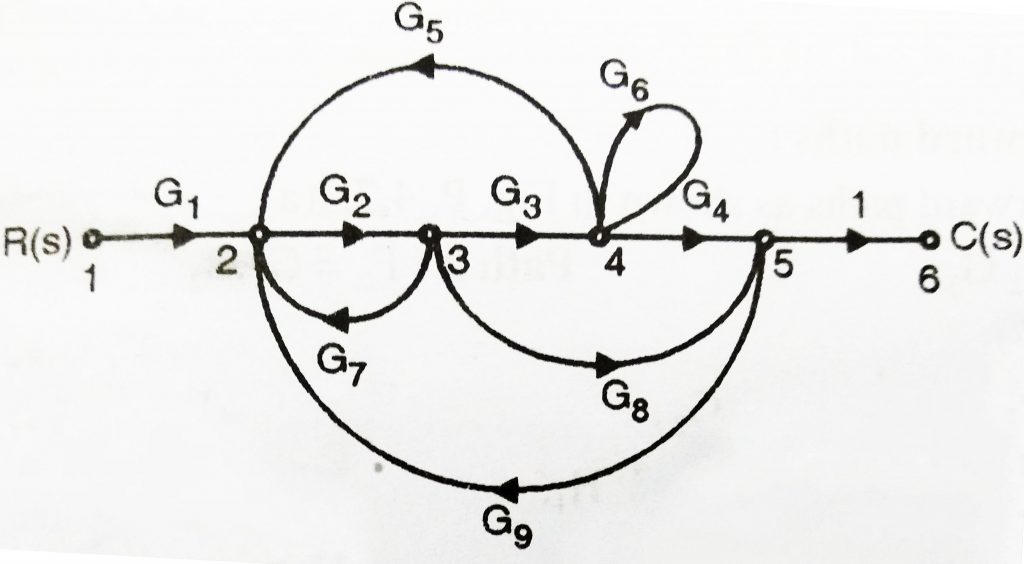
![]()
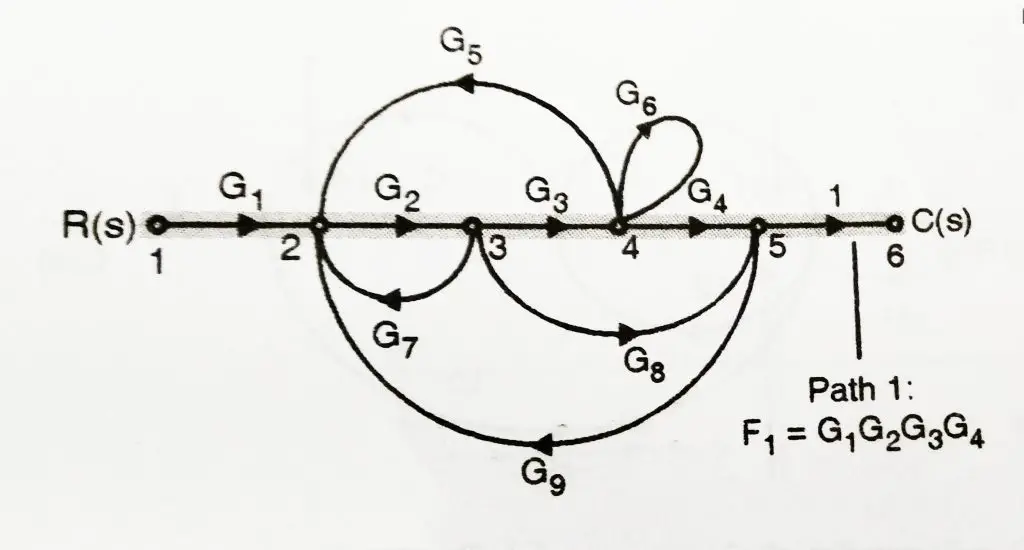
Step 2 : Total number of loops
Now , as we already found our required forward paths, we require a total number of loops.
There are total 5 loops in the signal flow graph if you observe carefully.
![]() =
= ![]()
![]() =
= ![]() ,
,
![]() =
= ![]() ,
,
![]() =
= ![]() ,
,
![]() =
= ![]() ,
,
Step 3 : Total number of 2 non touching loops:
![]() =
= ![]() =
= ![]()
Step 4 : There are no three non touching loops.
Step 5 : Value of Δ
Δ = 1 – ![]() +
+ ![]()
hence, Δ = 1 – ![]()
Step 6 : Find out the value of ![]() and
and ![]() :
:
All the loops touch the forward path ![]()
Thus , ![]() = 1
= 1
Loop ![]() doesn’t touch the forward path
doesn’t touch the forward path ![]()
Thus, ![]() = 1 –
= 1 – ![]() = (1 –
= (1 –![]() )
)
Now the overall transfer function using Mason’s Gain formula can be given by :
TF = C/R = ![]()
![]()
You may refer below figure to make your understanding explicit about the 5 loops , we have been working with .
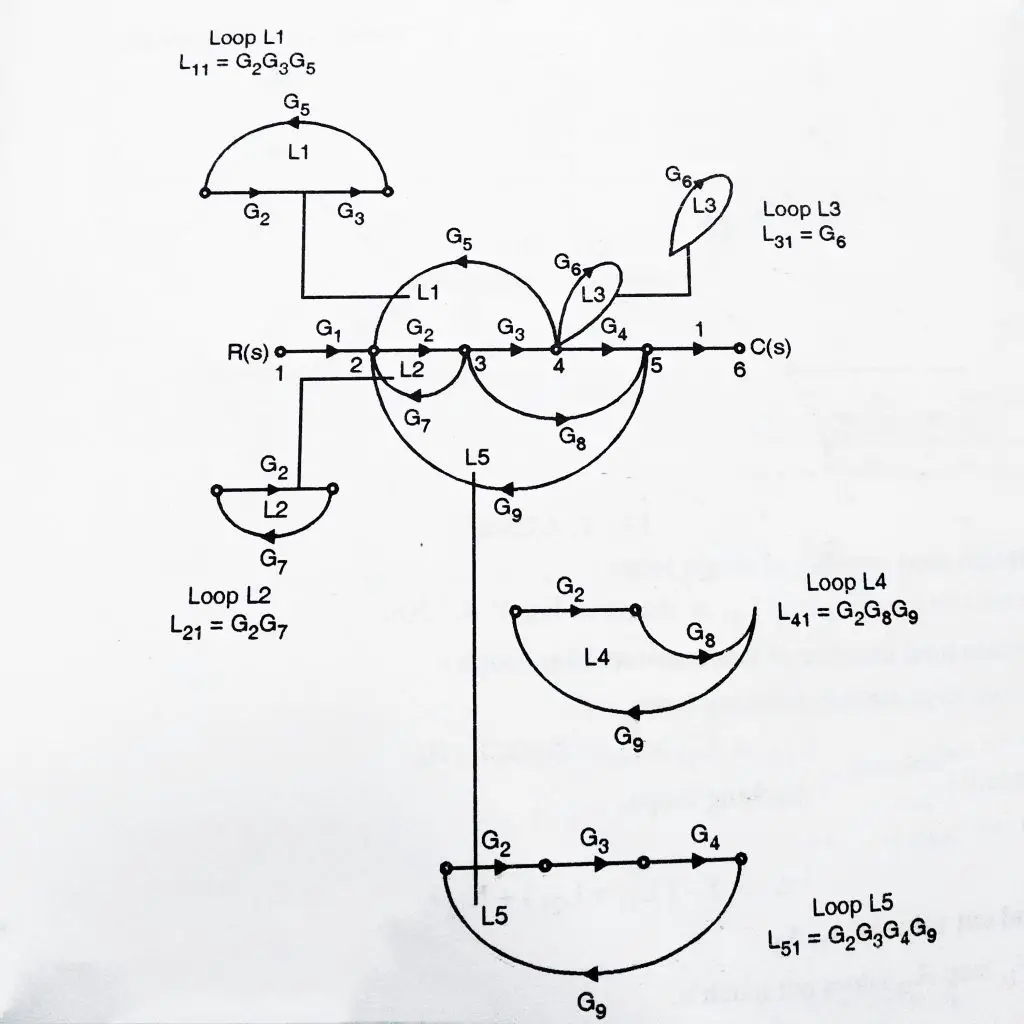
Here comes the end of our first variety, i.e deducing transfer function from a given signal flow graph. Now we proceed further to the second and third variety.(Both this can be termed as subset of first variety as for both of these , we need to deduce the signal flow graphs first , then we have to follow the normal steps as we followed in first variety).
If a block diagram is given to us, then we must first deduce the signal flow graph as shown below:
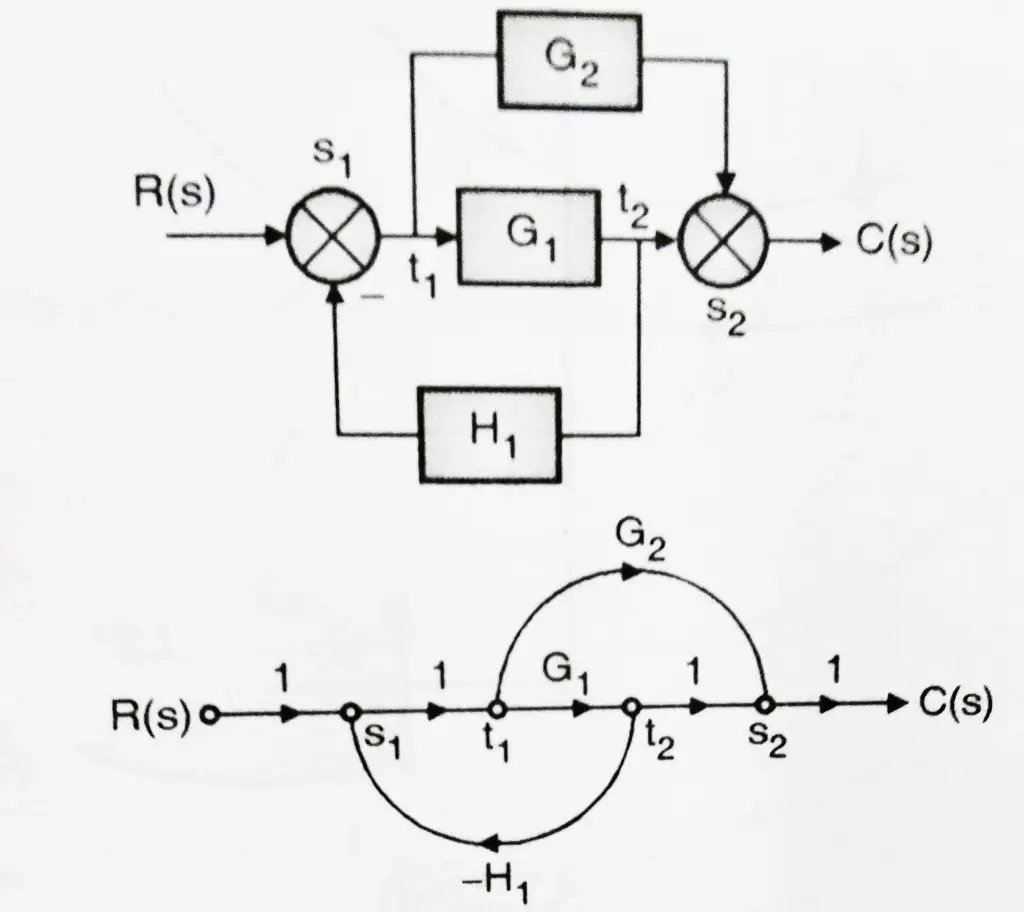
Step 1 : Obtain forward paths :
There are two forward paths
![]() =
= ![]() and
and ![]() =
= ![]()
Step 2 : Obtain total number of single loops:
![]() = –
= –![]()
Step 3 : Obtain number of two non touching loops:
There are no two non touching loops.
Step 4 : Find the value of Δ :
Δ = 1 – ![]() = 1 –
= 1 – ![]()
Step 5 : Find the value of ![]() and
and ![]()
Since the loop ![]() touches
touches ![]() as well as
as well as ![]() .
.
Thus, ![]() = 1 ,
= 1 , ![]() = 1
= 1
Step 6 : Using mason’s Gain formula, we have :
TF = C(s)/R(s) = ![]()
TF = ![]()
Now let us see the last variety of numerical in this topic:
Suppose the equations given as
![]() ;
;
![]() ;
;
![]() ;
;
There are four nodes ![]() ,
, ![]() ,
, ![]() and
and ![]() . we shall now draw the signal flow graph using above equations:
. we shall now draw the signal flow graph using above equations:
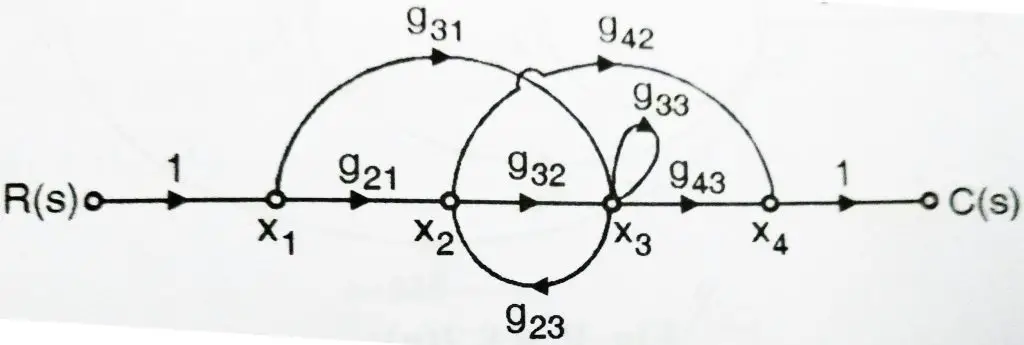
Step 1 : Obtain the number of forward paths:
![]()
![]()
![]()
![]()
Step 2 : Obtain total number of loops
![]() ;
; ![]() ;
;
Step 3 : Obtain number of non touching loops
There are no two non touching loops
step 4 : Find out the value of Δ :
Δ = 1 – ![]() ; Δ = 1 –
; Δ = 1 – ![]() ;
;
Step 5 : Find out the value of ![]() :
:
Since the two loops touch all four forward paths,
Thus ![]() = 1
= 1
Step 6 : Using Mason’s Gain formula, we obtain transfer function :
![]()
Finally we reach the end of this post. Later , i will give more solved examples PDF with this post. I request you to go through the questions first (without looking into the solutions), after trying from your end , verify the solution given in the end of the document.Stay tuned for the next important ( and interesting) topic of this subject in my next post.

Aric is a tech enthusiast , who love to write about the tech related products and ‘How To’ blogs . IT Engineer by profession , right now working in the Automation field in a Software product company . The other hobbies includes singing , trekking and writing blogs .

Thank you for the problems. I’ve followed along one of them and it has been helpful.